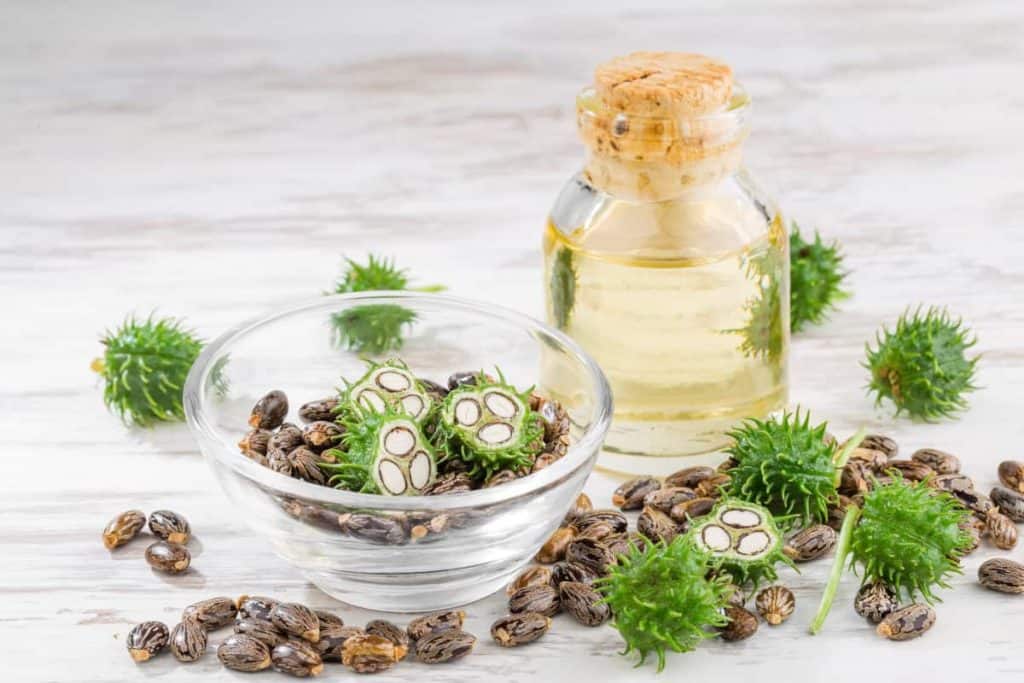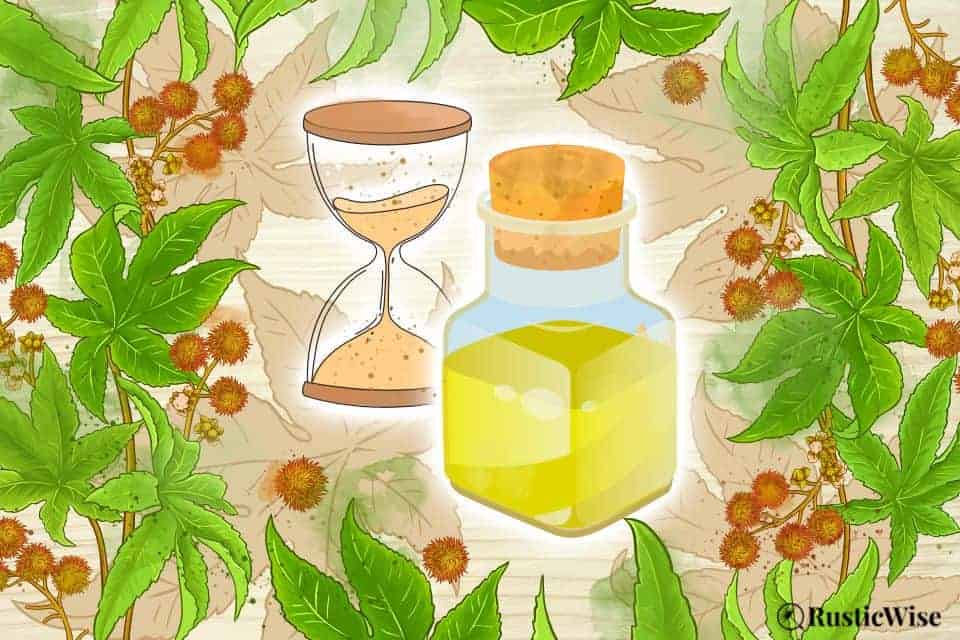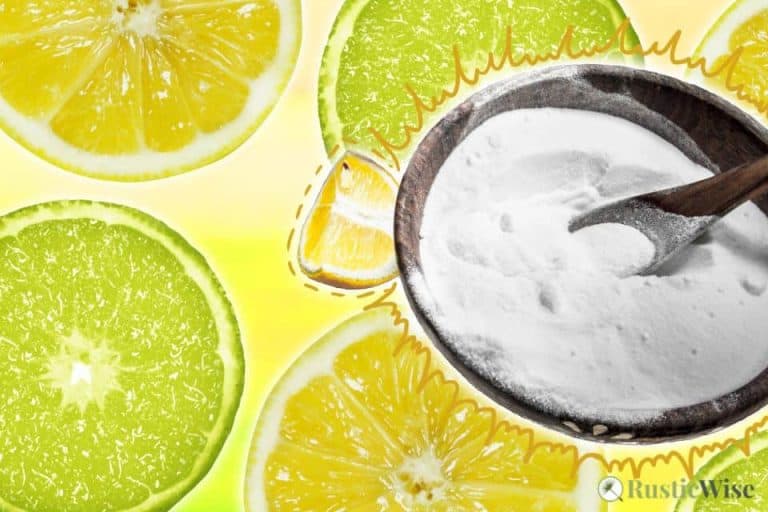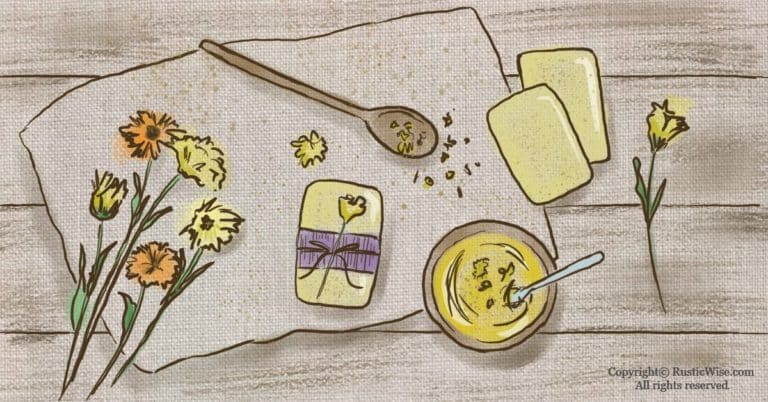Does Castor Oil Expire? 6 Tips on How To Extend Shelf Life
If you have a bottle of castor oil sitting on your shelf, you may wonder, does castor oil expire? Yes, an unopened bottle of castor oil is best used within 1 year from the manufacturing date. But, with proper storage, you can extend the shelf life of your oils and prevent rancidity.
Just like other vegetable oils, castor oil has a best-by date. This date is just a guideline, however, and your castor oil may still be safe to use long past this date—IF stored properly.
Castor oil is a versatile oil that’s used in soap making, DIY beauty treatments for skin and hair, and a wide range of commercial applications. There are many ways you can use up an old bottle of castor oil.
Read on to learn tips on how to extend the shelf life of castor oil.

Credit: Biodiversity Heritage Library / Flickr
What is castor oil?
Castor oil derives from castor bean seeds of the castor plant (Ricinus communis). Sometimes, it’s called ricinus oil. The Ricinus communis is a member of the spurge family (Euphorbiaceae).¹
Castor oil has a light color that ranges from clear to pale yellow or yellow-green. A variation of this vegetable oil is Jamaican black castor oil, which has a rich reddish-brown coloring that comes from roasted seeds.
While it has a mild distinct odor, castor also has a thick, viscous texture, and a strong aftertaste that some describe as nauseating—reasons it’s not used as a cooking oil.
Castor oil has a unique fatty acid composition. It consists of 90 percent ricinoleic, 4 percent linoleic, 3 percent oleic, 1 percent stearic, and less than 1 percent linolenic fatty acids.² Ricinoleic acid has 18 carbon atoms.
Ricinoleic acid is commonly used in skin care as it’s deeply moisturizing and helps prevent the loss of moisture in skin. Its hydrating properties also make it a common ingredient in hair oil and other hair care products.Rich in ricinoleic fatty acid, castor oil is used for a wide range of commercial applications. It’s a key component in industrial lubricants and mechanical fluids, cosmetics, hair products, compounds that inhibit fungus growth, paint, resins, and printer inks. Castor oil is a key ingredient in turkey-red oil, a fluid used as a textile dye.¹
Where does castor oil come from?
You’ll find the Ricinus communis plant in India, Brazil, and China. Today, India is the largest producer of this versatile oil.
How is castor oil extracted?
The oil from castor seeds is extracted by both mechanical presses and solvent extractions. During the first phase, seeds are crushed by mechanical hydraulic presses. This extraction process happens either at low temperatures (known as cold pressed), or warmer temperatures which produce distinct qualities.³
Cold pressed castor oil is thought to be more pure, with its structure left intact.
Mechanical pressing only extracts about 37 percent of the oil—the rest is extracted by solvent extraction.³
After this, the leftover component is called a de-oiled cake (DOC). The castor cake serves as a fertilizer or fuel source.
The castor oil then undergoes refinement and purification.
Does castor oil expire?
Yes, like other vegetable oils, castor oil eventually expires too. Most manufacturers recommend that castor oil (both regular and Jamaican black) is best used within 1 year of the date of manufacture. Proper storage can help extend the shelf life of ricinus oil.
All natural oils are prone to oxidation. In scientific terms, this means the loss of electrons during a reaction by an atom, ion, or molecule. Vegetable oils may spoil through interaction with oxygen, but mainly they become rancid through photo-oxidation (exposure to light).
Castor oil is an unsaturated oil, which means it has several double or triple bonds between carbon atoms. Double bonds break down more easily than single bonds, which is why castor oil has a shorter shelf life than saturated fats, such as coconut oil.
Proper storage of castor oil is key to extending its shelf life (more on this below!).

Credit: 123RF.com
How can you tell castor oil has gone bad?
There are two main ways you can tell an oil has gone rancid —by appearance or odor.
Expired castor oil will have an altered appearance. It may look cloudy or have a darkened color. Keep in mind that regular castor oil should have a pale clear to yellow-green coloring. Jamaican black castor oil is normally reddish-brown.
The second way to tell if castor has gone bad is simply by using your nose. Once you get a whiff of rancid oil, you’ll know! It smells pungent and unpleasant.
Please don’t try tasting expired oil —it’s not worth getting sick!
Is it safe to use expired castor oil?
It depends. It’s important to distinguish between castor oil that has simply passed its expiration date (and looks and smells otherwise fine), vs. a rancid expired oil. I would NOT recommend using rancid castor oil as the smell will be awful and not something you’ll want to put on your skin or hair, or ingest internally.
An expired castor oil should still be safe to use as long as you don’t notice any unpleasant odors, or a drastic change in appearance.
Tip: Keep in mind that if you’re using an older bottle of castor, it may shorten the shelf life of any DIY products you’re making with it, such as homemade soap or hair products. It’s best to stick with fresh castor oil if possible.
How to dispose of expired castor oil
The best way to dispose of expired castor oil is to place it in a sealable container that’s shatter-proof with the rest of your trash. Or, if you have a local eco-station which accepts used vegetable oils for disposal, you could drop it off there.
Tips on how to store castor oil to extend shelf life
With proper storage, you may extend the shelf life of your castor oil up to 2 years. Keep your oils in a dark, cool, and dry place. The enemies of any oil are oxygen, light, and heat. Here are a few tips on best oil storage practices.
- Store away from light, heat, and humidity: Photo-oxidation occurs when oils are exposed to any type of light, especially direct sunlight (which speeds up the oxidation process). So, keep your oil away from sunny windows! Most glass bottles of castor oil come in amber or dark brown hues which filters out light. Store your oil in a dry, dark cupboard or drawer that’s away from the heat of an oven or stove.
- Store at the correct temperature: Most oils keep best at cooler temperatures between 55 and 60 degrees Fahrenheit (13 and 16 degrees Celsius). If you have a cool, dark place such as a basement or pantry, this works well.
- Keep it airtight and minimize extra space: As mentioned, exposure to oxygen degrades the quality of the oil. Protect your castor oil by sealing it tightly after use. If you have a lot of empty space at the top of the bottle between the lid and the liquid (we call this headspace in home canning), your oil is exposed to oxygen. Pour your oil into a smaller container to minimize excess exposure to air.
- Keep it clean: Avoid directly touching or contaminating the oil with hands, or utensils which may introduce bacteria. Instead, pour out only the amount you need.
- Check the best-by date before buying: If possible, check the best-by date on the bottle before purchasing. Many local bricks-and-mortar stores may keep old bottles of oil around for a long time. Buy from a reputable soap and body supply wholesaler.
- Add some vitamin E oil: While vitamin E is NOT a preservative, it acts as an antioxidant by lending electrons to the free radical which stabilize the liquid. Add just a small amount of vitamin E oil (about 0.5 percent, or less) to your fixed oils to extend shelf life.
Does castor oil need to be refrigerated?
No, castor oil does not need to be stored in the fridge so long as it’s kept in a cool, dark place.
There’s conflicting advice about whether to store oils in the fridge. If you have room in the fridge, I don’t see a problem with storing castor oil in it. Most unsaturated oils do fine in the fridge—just let it warm up at room temperature for 30 minutes before using.
Tip: If you’re not planning on using a lot of castor oil, it’s best to avoid buying bulk oils and buy smaller bottles instead.
Ways to use castor oil
There are many ways to use castor oil if you have a bottle at home.
- Make natural soap: Castor oil is a popular oil which creates a lovely bubbly lather and has moisturizing properties in homemade soap recipes. Most recipes use a small amount, just 5 percent or less.
- As a skin moisturizer: If you have cracked heels, dry elbows or knees, rub a few drops of castor onto skin. Castor acts as a humectant working to draw and retain moisture to skin. You can use alone, or mixed together with other skin loving oils such as olive oil or coconut oil.⁴
- Soothe skin: Castor oil contains anti-inflammatory properties which may heal minor skin wounds, and help manage acne.⁴
- Natural hair treatment: Castor oil’s anti-inflammatory qualities can also help moisturize dry hair and scalp. Since this natural oil is free of harsh chemicals, you can use it as part of your regular hair care routine for healthy hair. Some people also claim it helps with hair growth, or hair loss. However, there are few scientific studies to back these claims.⁴
- Natural laxative: The use of castor oil as a natural laxative is a traditional folk remedy. Only use a small amount. Always consult with your doctor before ingesting to see if it’s right for you.
Is castor oil toxic?
While castor beans have a toxic enzyme called ricin, it’s destroyed during the heating and processing of the oil. Once castor oil has finished the refinement process, it’s safe to use. The U.S. Food and Drug Administration (FDA) classifies castor oil as as Generally Recognized as Safe (GRAS) for ingestion as a stimulant laxative.³
Castor oil safety tips
- Do a patch test: While ricinus oil is safe for most people, it’s always a good idea to do a 24 hour skin patch test before using. Some people may experience skin irritation, or scalp irritation when using this viscuous oil.
- Do not ingest if pregnant: It’s not safe for pregnant women to ingest castor oil as it may induce labor.⁴
- Consume only in small quantities: You can consume small amounts of castor oil safely (some ingest it as a laxative), but large amounts may cause diarrhea, cramping, or vomiting.
The takeaway: does castor oil expire?
Castor oil is rich in ricinoleic acid, a fatty acid, which makes it an effective ingredient in many health and beauty products. While it may be a versatile ingredient, it has a shelf life of 1 year from the date of manufacturing. Get the most out of your castor oil through proper storage and adding a bit of vitamin E oil to prevent oxidation. With proper storage in a cool, dry, and dark place, you may extend its shelf life to 2 years or more.
Related questions
How do you store a castor oil pack?
A used castor oil pack should be stored in an airtight container or a resealable plastic bag. Keep it in a cool, dark place, or in the fridge.
A castor oil pack is a simply a piece of natural breathable fabric that is soaked in castor oil and applied topically. This helps with inflammation and swelling in the joints (arthritis), and circulation.
Why is castor oil so expensive?
Castor oil is pricey due to several factors. First, the production process of castor oil is labor-intensive and time-consuming. The oil is extracted from the seeds of the castor plant, which require careful cultivation and harvesting.
Plus, the seeds contain a toxic compound called ricin, which needs to be carefully removed during the extraction process, adding to the cost.
The castor plant is predominantly grown in specific regions, which limits its availability and bumps up transportation costs. Finally, there is a growing demand for castor oil in various industries, including cosmetics, pharmaceuticals, and industrial applications, which further drives up the price.
New to making soap? 🧼❓
👉We have a fantastic overview on the whole soapmaking process here: read our Timeless Guide To Soapmaking.
If you would like to see our soapmaking posts organized by topic type, see our Soapmaking Collection.
Would you like more timeless tips via email?
Fun tips to help you live an independent, self-sustaining lifestyle. Opt-out at any time.


References
- Britannica, Castor oil, https://www.britannica.com/topic/castor-oil. Accessed October 2023.
- Patel, V. R., Dumancas, G. G., Kasi Viswanath, L. C., Maples, R., & Subong, B. J. (2016). Castor Oil: Properties, Uses, and Optimization of Processing Parameters in Commercial Production . Lipid insights, 9, 1–12. https://doi.org/10.4137/LPI.S40233.
- International Castor Oil Association (ICOA), FAQs, https://www.icoa.org/faqs/. Accessed October 2023.
- Kubala, Jillian (23 January 2023). “4 Benefits and Uses of Castor Oil,” Healthline. Accessed October 2023.

Author: Josh Tesolin
Josh is co-founder of RusticWise. When he’s not tinkering in the garden, or fixing something around the house, you can find him working on a vast array of random side projects.









